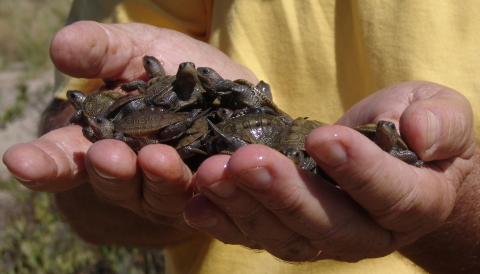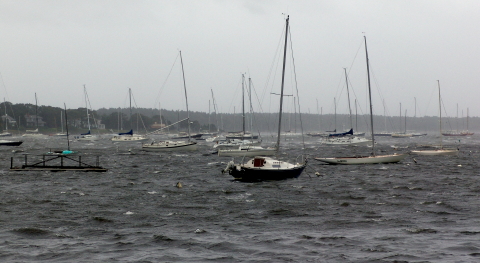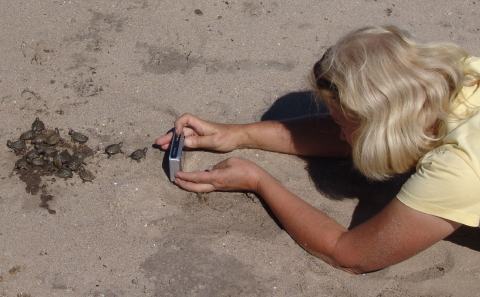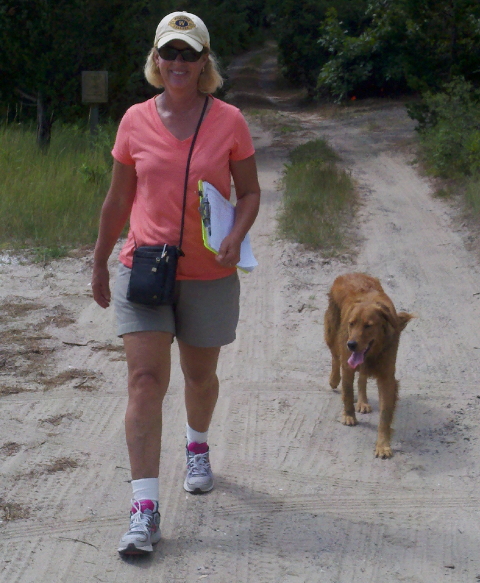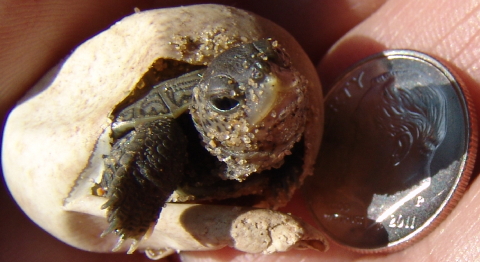Handful of Hatchlings
Hurricane Irene stormed into New England on Saturday night and Sunday. Before its arrival, the Turtle Journal team harvested diamondback terrapin nests vulnerable to the forecast storm surge. Each nest was carefully excavated. Eggs were transferred to sand-filled buckets that were moved to the sunroom incubator at Turtle Journal Central.
Hurricane Irene Sweeps through Sippican Harbor
As Hurricane Irene approached and as the barometer plunged, hatchlings tunneled to the surface of their bucket nests. They circled and waited, never noticing the 70 mph gusts, never hearing the limbs crashing around them, unconcerned that electricity and modernity disappeared in the intensity of the storm. They simply waited for release.
Sue Wieber Nourse Documents Release
On Monday after the storm passed, the Turtle Journal team returned fifty hatchlings to Turtle Point on Lieutenant Island in South Wellfleet on Outer Cape Cod. Placed at the tip of Turtle Point, hatchlings scrambled in every direction looking for the cover and safety of vegetation.
Terrapin Hatchlings Scramble to Safety
One hundred ten more hatchling were released on Thursday, and several dozen that have emerged overnight will see freedom on Saturday morning. Nothing like a tropical storm to kick the diamondback terrapin hatching season into high gear!
